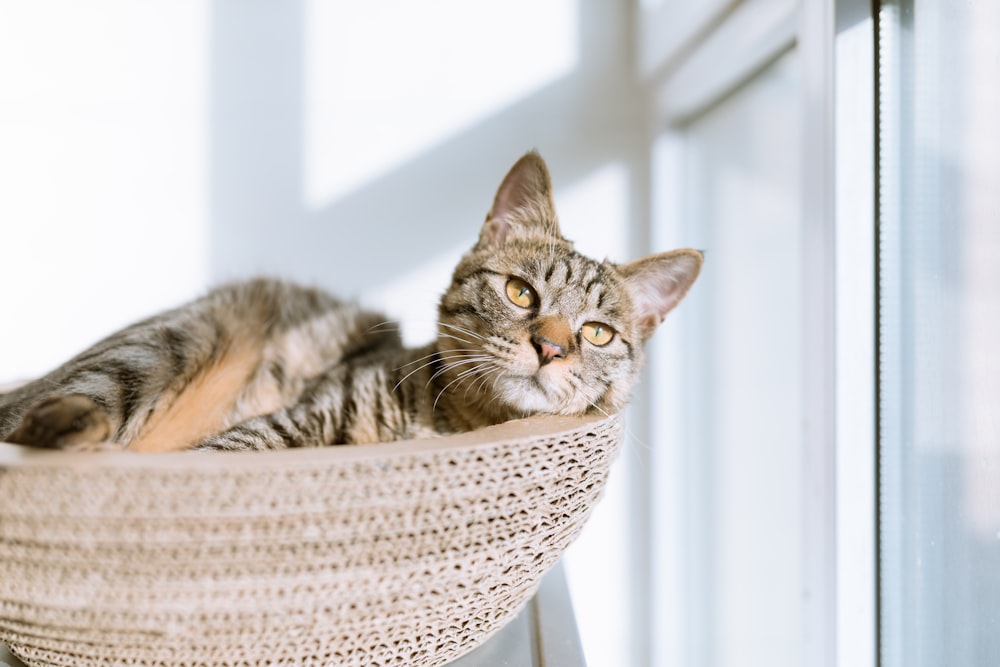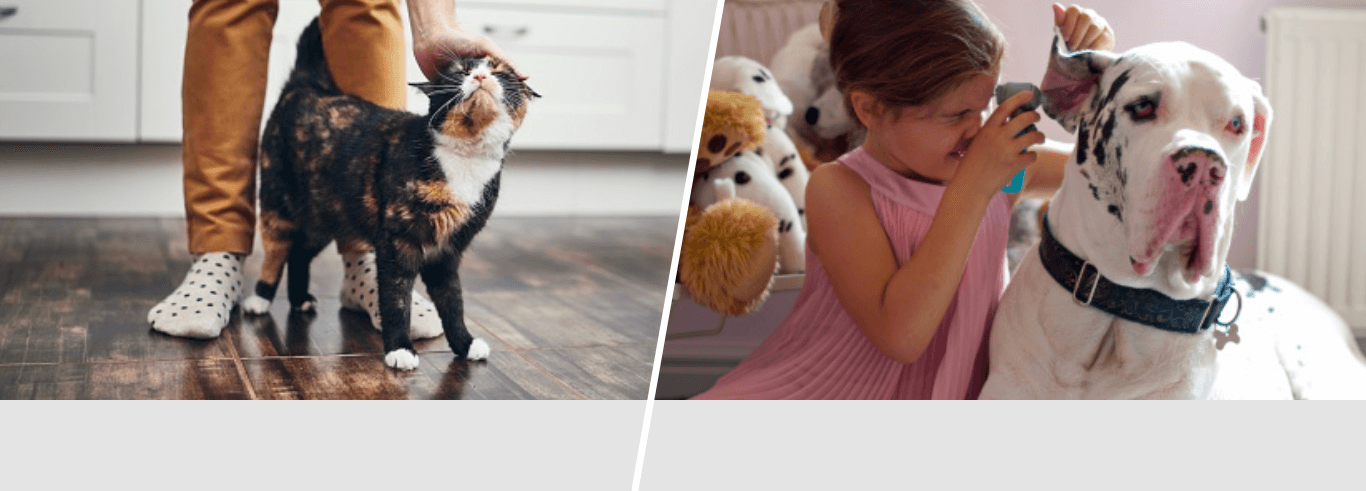Bald patches on cats: symptoms, causes and treatment
Is your cat losing fur? Perhaps you’ve noticed a new bald patch on your cat that you never noticed before? Or maybe there are multiple bald patches in your cat’s fur? Changes in your feline friend’s health or appearance can be a worrying thing for a pet owner, but fur loss is actually fairly common and may be no cause for alarm.
To put your mind at ease, here is everything you need to know about bald patches on cats, from how to identify them, to why your cat may be getting bald spots and what treatments they may need to resolve the issue.
What do bald patches on cats look like?
A bald spot on your cat can vary in appearance, and your cat may have many areas of fur loss or just one or two. Depending on the cause, you may also notice that your cat has scabbing in places where they used to have fur. An external parasite, for example, can cause both hair loss as well as scabs on cats, as the parasite can damage both the hair follicle and the skin in general.
If you notice your cat has fur loss only and their skin looks relatively healthy, your cat may be suffering from stress-induced hair loss. A good signifier of what the cause for your cat’s fur loss is, is where the bald spots are. If they are in the typical grooming spots, the bald patches on your cat may be a result of overgrooming.
Regardless of what the cause is, if you notice new bald spots or scabbing on your cat’s skin, it is important to seek the advice of a vet. Although not all serious, some causes of bald patches on cats can have adverse effects on your cat’s health long-term.
Why is my cat losing fur?
The reasons of what causes bald patches on cats can be varied but the most common causes of fur loss or the development of bald patches in cats are:
- External parasites (such as fleas)
- Ringworm
- Overgrooming due to stress or anxiety
- Allergies
- Thyroid problems
- Genetic conditions
Depending on the reason, you may need to seek the advice of a vet at the earliest opportunity.
External parasites
Parasites such as mites or fleas are the most common cause of bald patches on cats. Usually, the problem is caused by your cat suffering a reaction to the saliva of the flea and a localised reaction occurs, particularly on the back, towards the tail. Fortunately, the problem is usually fairly easy to treat, and the hair will grow back as soon as the fleas or mites are gone.
Parasite treatment
This condition is best treated with products such as ‘spot-ons’ to eliminate the external parasites. Products from the vet tend to be most effective, but sometimes additional treatments might be needed to relieve itching – for example, a course of steroid treatment.
In some circumstances, external parasites such as fleas can cause feline acquired symmetric alopecia which could be signified by extensive hair loss down both sides of a cat’s body.
Ringworm
Unlike a parasite, ringworm is a fungal infection that causes circular lesions on the skin, where the hair will thin or disappear completely, giving the appearance of a bald spot on your cat. Ringworm is highly contagious, and it can be transmitted by direct contact with the fungal spores. These can live for up to two years, meaning your cat can catch it from any area an infected animal has visited.
Ringworm treatment
Ringworm is usually diagnosed by performing a fungal culture on a sample of hair but examining the hair under the microscope or examining the whole haircoat using a UV lamp (Wood’s lamp) can also provide clues. Ringworm can be detected by taking a swab of the skin and treatment typically involves using shampoos or other medication to restrict the growth of the fungus.
Cat overgrooming
If you notice that your cat is grooming themselves more often than usual, this may be causing them to lose their fur. In rare instances, over-grooming can be a sign of a neurological disorder, particularly in older cats but, more commonly, it is a behaviour triggered by stress or anxiety.
Overgrooming treatment
It’s important to try to prevent over-grooming becoming a habit. One of the most effective ways to treat over-grooming in cats is by intervention. Whenever you notice your cat licking excessively or for a long period, try to interrupt calmly. Perhaps play a game or offer a treat.
Cats are keen self-groomers and take great pride in keeping themselves looking good by licking their fur regularly. They can, however, over-groom by licking too much too often or even biting at and chewing their fur. This can result in the thinning of fur or complete bald patches on your cat, particularly on the front paws.
Allergies
Reactions caused by contact with an allergen can result in hair loss and other problems such as dry skin and blisters. Allergic reactions most commonly stem from the cat’s environment such as contact with plants.
Allergy treatment
Your cat may be allergic to some foods, and so might need testing. If you have changed your cat’s diet and noticed fur loss, then revert to the previous diet and contact your vet.
Thyroid problems in cats
Thyroid problems in cats arise when the animal produces too much of a hormone (hyperthyroidism). It’s also crucial to understand that cats do not suffer from hypothyroidism unless hyperthyroidism is overtreated.
One of the symptoms of thyroid problems in cats is the development of bald patches on your cat. Hyperthyroidism and hypothyroidism can be detected using blood tests. Treating an overactive thyroid in cats is often quite straightforward by using medication prescribed by a vet. However, on rare occasions, surgery might be required.
Treatment for thyroid problems
There are a range of treatment options available for hyperthyroidism, including oral medication, surgery and radioactive iodine treatment.
Genetic conditions
Some cats will lose hair because of a hereditary condition. There is no treatment for this but usually the problem is sporadic and the hair will grow back within a few weeks.
Cat owners should also be aware that some cats have naturally thinning hair, particularly on the tops of their heads or parts of their body they use to brush up against people and objects. This varies between breeds but is most noticeable in cats with dark fur and light skin. It is not usually an issue unless complete baldness occurs.
Some fur loss is natural, and some breeds have no hair or fur at all. So, in essence, bald patches on cats isn’t necessarily always a result of a serious condition.
Why is my cat going bald?
Your cat may have just developed its first bald spot, or you may find that they have lost, or be in the process of losing most of their hair.
Whatever reason for your cat losing fur, whether it be parasites, allergies, or stress, it’s vitally important to get support from your local vet to ensure your cat gets on the road to recovery as soon as possible. It may be the case that your cat is simply overgrooming themselves or that the hair loss is natural, if this is the case, then at least you have put your mind at rest by seeing the vet.
Concerned about your cat? Ensure you have peace of mind with Argos Pet Insurance provided by Pinnacle Insurance Ltd. Explore our cat insurance policies today.
Argos Limited is an Appointed Representative of Sainsbury’s Bank Plc. Sainsbury’s Bank Plc is authorised by the Prudential Regulation Authority and regulated by the Financial Conduct Authority and the Prudential Regulation Authority (Register no. 184514). Registered office: 33 Charterhouse Street, London, EC1M 6HA (registered in England and Wales, no. 3279730). Sainsbury’s Bank Plc act as an introducer to Pinnacle Insurance Limited, who sell, administer and underwrite the policy and who are authorised by the Prudential Regulation Authority and regulated by the Financial Conduct Authority and the Prudential Regulation Authority (register number 110866). Registered office: 4th Floor, Limelight, Elstree Way, Borehamwood, Hertfordshire, WD6 1JH (registered in England and Wales, no 01007798). Sainsbury’s Bank Plc and Pinnacle Insurance Ltd are not part of the same corporate group.
We do not provide personal recommendations to customers.
 Sorry, our lines are now closed
Sorry, our lines are now closed





